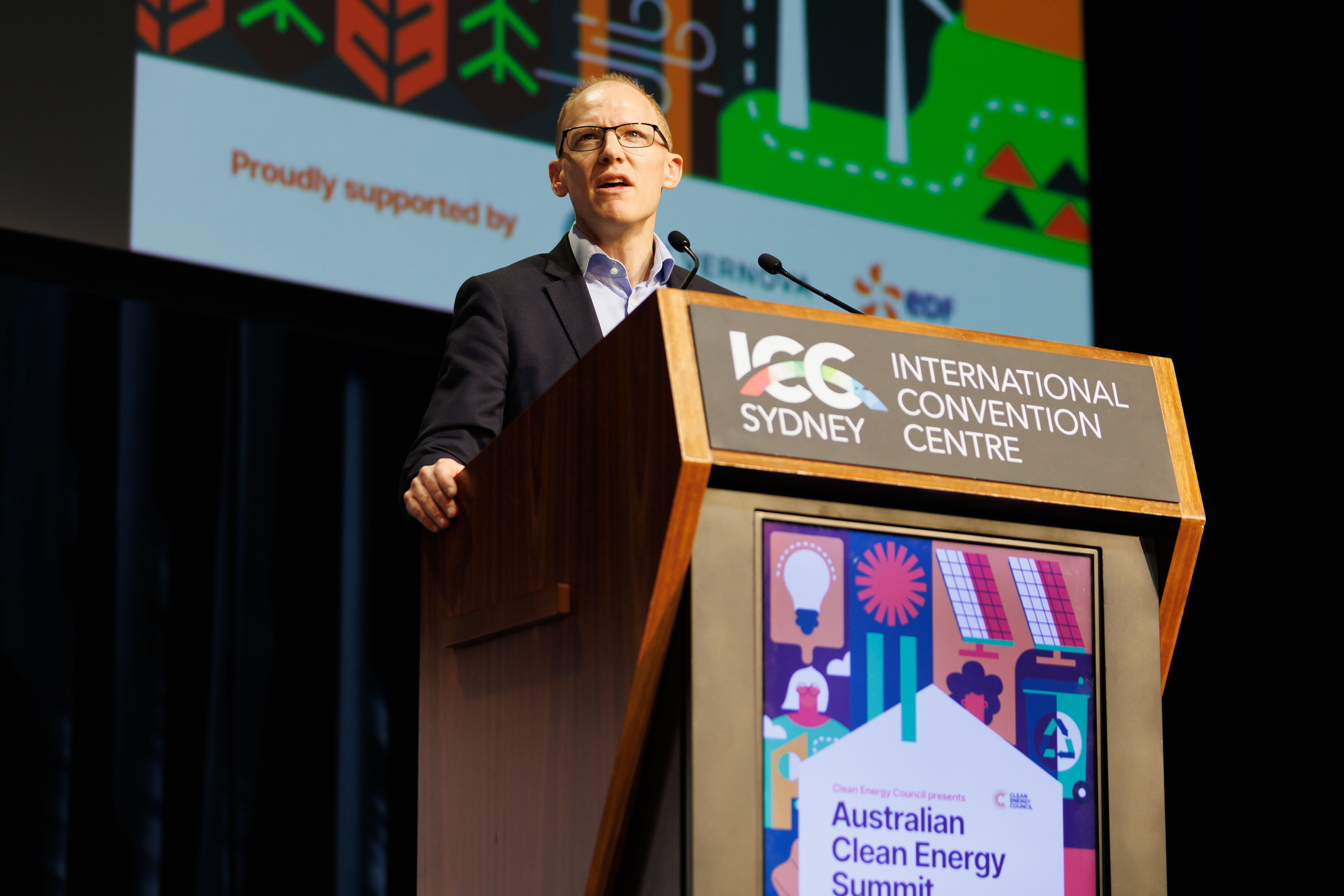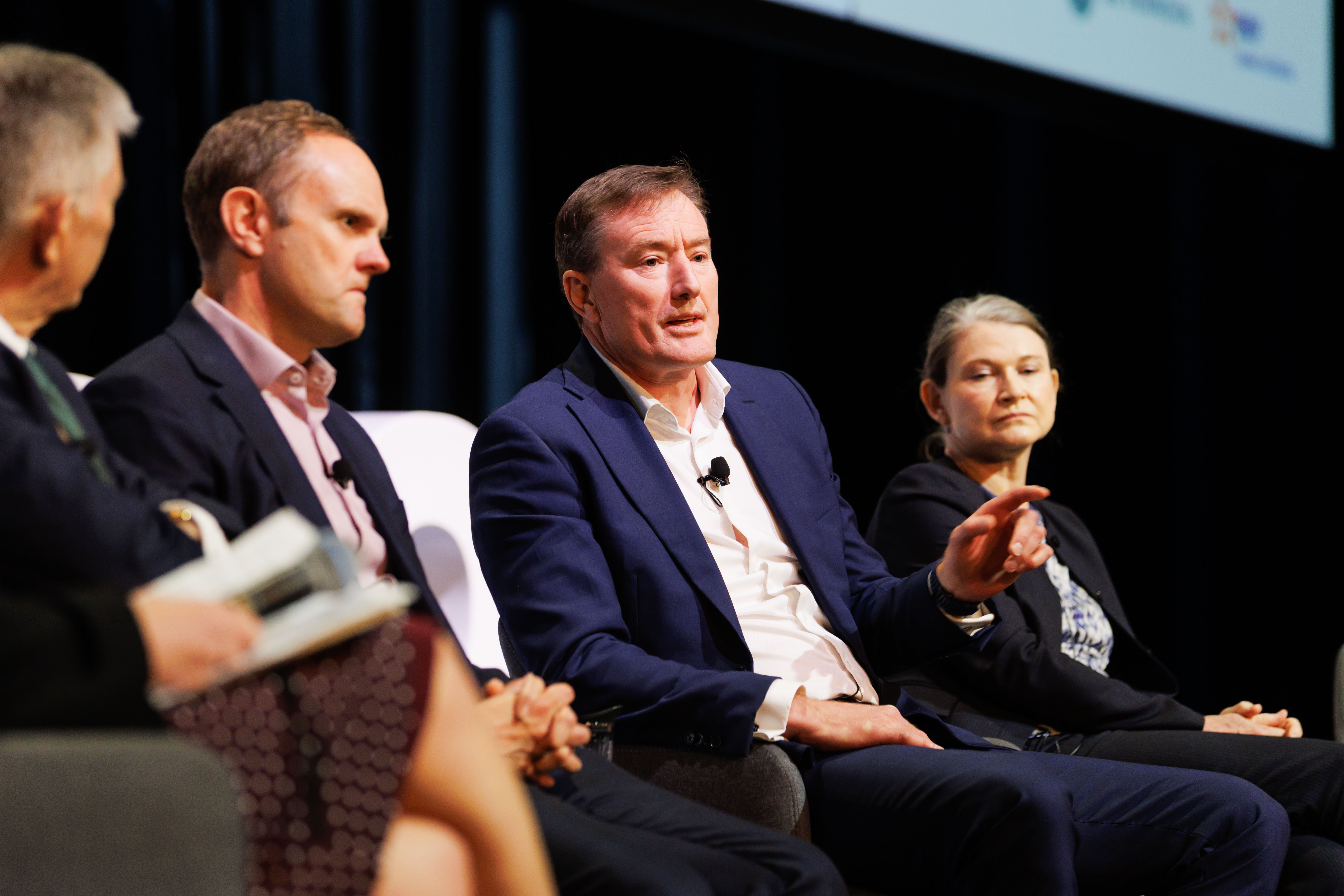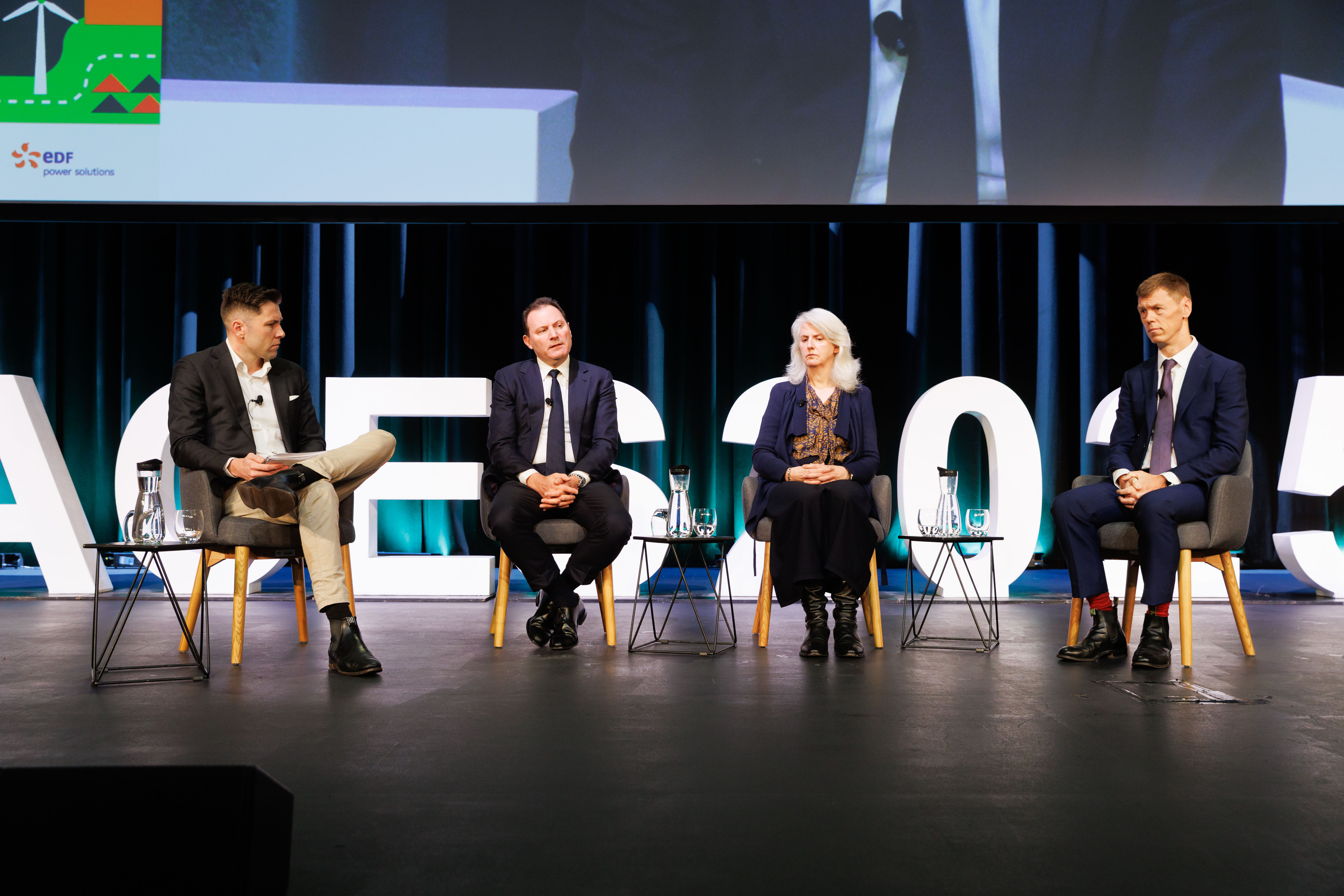The 2025 Australian Clean Energy Summit held in Sydney earlier this week, by the Clean Energy Council brought together over 1500 industry professionals, leaders, policy makers, developers across leading clean energy organisations, in two days of lively discussions and presentations covering the challenges and opportunities facing Australia’s energy transition.

Against the backdrop of the Albanese Government's re-election in May – seen as a mandate by the Australian people to continue the transition - presenters and panellists agreed on three common priorities that would enable and accelerate the delivery of the Government’s 2030 renewable energy targets. They include:
- Productivity within the energy sector is critical for getting the grid ready, ensuring energy security and bringing costs down;
- Planning and environmental reform is urgently required to provide industry with greater clarity. While community consultation must be done differently to engage regional Australia in the transition, increase transparency and deliver legacy benefits;
- Attracting and sustaining clean energy investment in Australia will be key to delivering on the urgency of the nation’s energy transition over the next five years, but requires the right policy settings to sustain investor confidence.
Productivity, getting the grid ready and ensuring energy security
The opening of the summit got off to a dynamic and energetic start, including a Keynote Address by AEMO CEO, Daniel Westerman on the state of Australia’s energy transition in 2025, a presentation on The Energy Productivity Agenda, by Professor Ross Garnaut on the importance of a successful energy transition for our economic future, and the surprise announcement by NSW Minister for Energy, the Hon Penny Sharpe MLC of a new ASL tender for 500 MW of additional firming capacity in the Sydney-Wollongong-Newcastle sub-region, to ensure energy security for the state amid a forecast energy shortfall in 2027-28.
The state of Australia’s energy transition and the National Electricity Market (NEM) in 2025 provided a backdrop for many of the plenary presentations, with several speakers and presenters highlighting that the potential for renewable energy to generate cheaper, cleaner and more reliable power will only be achievable when backed up by a combination of firming and transmission infrastructure, critical to guaranteeing energy security.
AEMO CEO, Daniel Westerman said, “This is a period that needs to be navigated by plotting the right course, and by having two very steady hands on the steering wheel. Right now, our control rooms are becoming mission control for one of the most complex, and critical challenges of our time: how we manage this evolution of our energy systems. It’s fast and it’s high stakes”.

Daniel Westerman, CEO, Australian Energy Market Operator (AEMO)
“Manual interventions are becoming increasingly common. In 2016, just six manual interventions were issued for the whole year – that’s the way the NEM and AEMO were designed to operate. But last year, that number was 1800 – nearly five manual interventions a day. The system is changing rapidly,” Mr Westerman said.
The Hon Minister Sharpe added, “There are still issues to solve and tweaks to make, but billions of dollars in investment and projects have sprung up from the ground. This work is not a ‘nice to have’ – it is a must do, for the future of our energy system and our planet.”
“AEMO’s message has been consistent and clear: that as Australia’s coal fired power stations retire, the least cost replacement for that energy is renewable energy, firmed with storage, backed with gas, and connected with upgraded networks,” Mr Westerman said.
Renewable energy large and small now supplies over 40 per cent of demand throughout the year in the NEM - roughly double the contribution renewables made just five years ago. The latest 2024-25 GenCost report, released by the CSIRO on Tuesday, reaffirmed that renewable energy remains the lowest cost and most practical form of energy to transition Australia’s energy system. The report found capital costs of large-scale solar and batteries are continuing to fall, down 8 per cent and 20 per cent respectively, year-on-year, due to economies of scale and innovation. While onshore wind costs have eased but remain impacted by supply chain constraints post-pandemic.
“If you want to bring down energy prices for households, you have to bring down costs – which is where the productivity piece plays out. We need to prioritise the cheapest technologies first - we want to see strong policy signals,” Energy Australia Managing Director, Mark Collette, said.
“Energy 20 years ago was a whole lot simpler. It’s definitely gotten harder. Now we have thousands of regulations and obligations to comply with every day. You end up with overlapping regulations and regulators, and tens of millions of additional cost on retailers, which impacts consumers,” he said.
As renewable energy continues to scale up as the mainstay of Australia’s energy system, the discussions centred around how the design and operation of our energy system is set to radically change, particularly as Australia’s world-leading uptake of rooftop solar, by four million Aussie households, is bolstered by the rapid uptake of home batteries.
Energy Australia Managing Director, Mark Collette, said: “The recent home battery subsidies announced by the Federal Government are massive, and will encourage the growth of a big industry that will be pivotal in creating a massive shift in how our energy is made and distributed.”
Discussion also turned to the broader policy settings at play for the renewable energy to deliver on its promises for emissions reduction and carbon abatement, in line with Australia’s internationally binding obligations, including the re-imagining of a carbon price.
“Let’s stop kidding ourselves in the 48th Parliament. Let’s start telling the truth. The truth is that early adoption of carbon pricing is in Australia’s national interest, and needs to be considered as a matter of urgency,” Professor Garnaut said.
Planning, environmental reforms and regional community engagement
The role of governments at Federal, state and local levels in improving planning processes and coordinating more effectively with industry on environmental reforms, as well as the importance of engaging meaningfully with regional communities, took centre stage across several sessions, beginning with the Opening Address by Clean Energy Council Board Chair and CEO of Iberdrola Australia, Ross Rolfe.
"There is no doubt that the traditional approvals processes are failing to meet the expectations of both developers, communities and the environment. The proposed reforms to the EPBC Act and its administration offers the prospect of addressing this problem. The promotion of bioregional planning, the setting of national standards and greater certainty of decision-making processes offer hope for a scientifically sounder, more streamlined system that will improve outcomes for both the environment and the economy," Mr Rolfe said.
The experience and insights of industry leaders highlighted that changes in approach by developers towards community engagement are much-needed, so that communities feel included, and heard – a critical pre-requisite for the successful delivery of new renewable energy infrastructure anywhere in Australia.

Rob Wheals, CEO, Squadron Energy
“There's definitely feedback from communities to go back to doing community consultation in a different way. Traditionally, we've engaged just before approval process starts. There's a very strong message where community is saying: ‘engage with us earlier - talk to us about the benefits earlier and be more transparent,’” Squadron Energy CEO, Rob Wheals, said.
The urgency of accelerating transmission upgrades, was also a common theme throughout many of the discussions, including project-on-project risk, which many panelists said were affecting investment appetite for major generation projects looking to connect to the grid, as well as the future of major energy off-takers, including Australia’s essential heavy industries such as mining.
“One of the greatest successes has been how industry and Transmission Network Service Providers have tackled the transmission challenge; we didn’t have the tools and technology many years ago, but this is now a smoother process, and we need to give a lot of credit to AEMO for where they’ve gotten to,” Mr Rolfe, said.
“Building out lowest-cost transmission will be critical to decarbonising the Pilbara, which itself comprises 20 per cent of Australia’s emissions, requiring consistency from government on the applicable standards and support mechanisms,” BP Head of Country – Australia, Lucy Nation, said.
Attracting clean energy investment to secure Australia’s energy future
Amid a strong undercurrent of uncertainty within global clean energy investment markets driven by an unpredictable second Trump Administration in the United States, among other factors, the risks and opportunities abound for Australia’s own energy transition were discussed earnestly and honestly, during a presentation by BloombergNEF Global Head of Strategy, Khobad Bhavnagri, a panel on Unlocking Australia’s clean industrial growth potential and Navigating the Global Power Shift.
The immediate obstacles facing the effective decarbonisation of heavy industries such as commodities and manufacturing, as well as the development of a competitive green hydrogen sector were acknowledged as critical for industry and government to overcome, in order to maintain Australia’s competitive advantages and sovereign capabilities for primary production.
Speakers pointed to high upfront costs and energy demand associated with new projects in the green metals and hydrogen sectors, as well as the need for greater coordination between industry and government, at all levels, to develop the infrastructure needed to secure these vital sovereign capabilities for Australia, as a pressing challenge.
"This [decarbonisation] is like a river flowing strongly in one direction. Investors, insurance and industry are swimming in one direction. We need to get back to energy being a competitive advantage and we need a high quality, high energy system,” Energy Users Association of Australia CEO, Andrew Richards, said.
"There are a few fundamental elements we have to get right. Transmission is fundamental to the transition. We need the right policy settings, and alignment across all levels of government for this to delivered, Rio Tinto General Manager - Energy Developments Pacific, Denva Poyntz, said.
Amid the vast opportunities for Australia to decarbonise at pace and become a clean energy superpower, maintaining an effective equilibrium between price, emissions reductions and reliability of energy supply, were highlighted as key success indicators of success.
“Energy sector emissions, reliability and price matter the most to consumers and off takers alike,” Australian Energy Market Commission (AEMC) Chair, Anna Collyer, said.

From left to right: William Churchill, Incoming Chief Policy & Impact Officer, CEC, Frank Calabria, CEO, Origin Energy, Rachel Watson, CEO, Hydro Tasmania, and Mark Collette, Managing Director, Energy Australia
“The complexity of running the market day to day is becoming more risky – we are all having to manage that. That challenge goes for maintaining reliability and security. We hold the firm view, if you have the confidence long-term, you can make decisions in advance of when you are retiring existing assets. That’s what we should be trying to achieve for a greater impact on cheaper energy,” said CEO of Origin Energy, Frank Calabria.
The projected growth of artificial intelligence (AI) and data centres in Australia as part of the shift towards a more information-based economy, was also agreed among panellists as likely to drive substantially higher demand for reliable, affordable energy generated overhwlemingly by renewable sources, backed up by storage capacity and modern transmission infrastructure.
“With greater top-line power consumption being driven by the growth of AI and data centres, there is a clear preference from the giants of the tech industry to source cleaner power wherever they can,” Mr Bhavnagri said.
Yet, Australia’s opportunity to push ahead with its energy transition and drive down power prices, modernise the economy and meet its climate change objectives remains strong.
“If we look past the noise of political stunts in Canberra, or even changes in administrations in Washington, this is a bigger issue than one occupant of the White House at one point in time. The fundamentals are in favour of more renewables, not less,” Climate Change Authority (CCA) Chair, Matt Kean, said.
ENDS
For more information or to arrange an interview, please contact:
Danielle Tricarico
Clean Energy Council General Manager - Media
dtricarico@cleanenergycouncil.org.au / +61 409 470 683
Liam Straughan
Clean Energy Council Media Officer
+61 409 470 683





